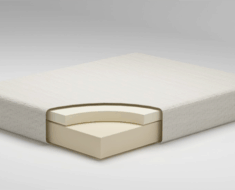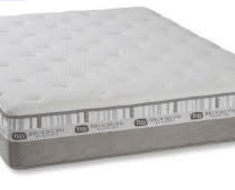
Investopedia
Debt. A four-letter word that nobody wants to hear. Being in debt can feel heavy and put a tight restriction on your spending. It can also be a major stressor in your life—and nobody needs extra stress these days.
Getting out of debt can be intimidating. But with the right habits and better financial planning, you can live debt-free. Here are four ways to dig yourself out of debt.
1. Spend Wisely
Once you’ve acknowledged your debt, it’s time to come to terms with it. If you continue down your current spending path, you’re only going to go deeper into debt. Putting a spending limit on yourself can be a challenge. You might want to consider switching to a secured credit card. A secured credit card requires you to put down a cash deposit. You can only spend up to that amount on the card. The issuer holds the deposit until you upgrade to a regular credit card.
Also, just because you are currently in debt doesn’t mean that you won’t have any future expenses. To keep your spending in check, you can find creative ways to cut your everyday expenses. That could mean reviewing your subscriptions, ordering less takeout, or planning low-cost date nights.
Another way you can keep costs down is to avoid purchasing big-ticket items. You may be dreaming of an ideal vacation or want to splurge on that new pair of shoes. Resist the urge to blow your spending budget. These things will all be doable eventually. You’ll be happier on vacation and wearing your shoes if you don’t have to worry about how much they cost.
2. Know What You Owe
Once you make a plan to keep your current and future spending in check, take inventory of how much you owe. This may be the most frightening part of the process. But understanding your debt is a crucial step to getting your finances on track.
Begin by getting your documents together. If you’re in a committed relationship, recruit your significant other or partner to help you. Gather all your financial documents and statements. Focus on your debt first, then any combined debt between you and your partner or spouse such as a mortgage payment. If you’re single, recruit a family member or friend to help you sort through your documents.
Next, make a list of everything you owe. This includes big ticket items like mortgage payments, student loans, and car loans. It also includes credit card balances. Next, make a list of the interest rates for each of your payments. Regular credit cards typically have the highest interest rates. As of September 2021, the average credit card interest rate was more than16%! Write all this information down in one place, such as a spreadsheet. This will help you keep track of everything as you consolidate your debt.
3. Set a Realistic Goal
Now that you know where you stand, it’s time for some goal setting. No matter how much debt you’re in, you need to set a goal. Your goal needs to be realistic and achievable. While you would like to win the lottery and pay off all your bills, the likelihood of that happening is slim.
Setting a goal may require you to think about why you want to get out of debt. Ask yourself how your debt is holding you back? How does your debt cause added stress to your life? What could you do if you weren’t in debt now and in the future?
Answering these questions honestly can help you create an achievable goal. Remember, getting out of a substantial amount of debt is time-consuming. In fact, it can take upward of 13 months to pay off credit card debt.
So take your plan one step at a time. Break your goal into shorter lengths of time, such as six months, twelve months, eighteen months. This will help keep you accountable and better manage your day-to-day spending habits.
4. Choose a Debt Repayment Method
With your goal in mind, it’s time to begin tackling your debt. Before you just start throwing your extra cash aimlessly at creditors, you’ll want to choose a method or approach. There are two primary methods for getting out of debt, and both have their benefits and setbacks.
The first method is called the “snowball method.” With this method, you pay off your smallest loans or debts first as quickly as possible. Once paid off, you start paying on the next smallest debt. This process continues until all your debt is paid, and the amount snowballs as the amount gets bigger and bigger.
The second method is called the “avalanche method.” With this method, you take the debt with the highest interest rate and pay that off first. When that debt is paid, you apply that amount of money to the next debt with the second highest interest rate. This continues until all your debt is paid.
If you like small, achievable goals the snowball method may be the better fit. You will likely be able to cross off debt faster and see smaller wins with this method. But you may still be paying a lot of interest. If you want to save some money by not paying interest, the avalanche method may be for you. Whichever method you choose, stick with it. Going back and forth between the two won’t help your wallet.
Being in debt is common, so don’t feel embarrassed by your situation. Limiting your current spending, understanding your debt, and selecting a method for tackling your situation can help you reach your goals.
Enlist your family and friends for support. The people closest to you should support you rather than tempting you to spend on unnecessary, extravagant luxuries. The closer you stick to your goals, the faster you can rebuild your credit. Then you can get back to a place of financial autonomy and security. That feeling alone is better than a new pair of shoes.









































